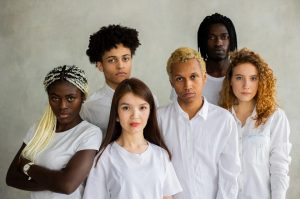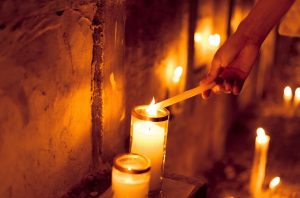How to Befriend a Pole: A Quick Survival Guide
So, you’ve landed in Poland and you’re ready to make some friends — but you’re not sure how to approach the locals? Don’t worry; I’ve got you covered! Poles may seem serious at first (we’re masters of the “straight face”), but once you know a few insider tips, you’ll find us to be warm, loyal, and pretty fun to be around.
1. Small Talk? Nah, Go Big or Go Home
Poles aren’t the small-talk champions of the world. If you start with “How are you?” expect a real answer — anything from “Terrible, my cat kept me up all night” to “I just aced my exam!” We value genuine connections, so if you show a real interest, you’re in.
2. Food is Your Secret Weapon
Poles love food, and sharing it is a sign of friendship. Trying a Polish dish or even asking questions about pierogi or bigos (sauerkraut stew) is a great icebreaker. And if you’re offered food, accept! Even if you’re full — just say, “Maybe just a little.” Your Polish friends will appreciate the gesture!
3. Straight Talk is the Best Talk
We’re pretty direct. If a Pole says, “This needs improvement,” it’s just a fact, not a critique of your soul. This directness helps when dealing with university staff — clear questions and a bit of patience will get you far. And if you need help, ask kindly. Most Poles are more than willing to give you a hand.
4. Show Interest in Poland (Or at Least Pretend!)
Nothing warms a Polish heart faster than a foreigner curious about our country! Ask about local traditions, places to visit, or why there’s a jar of pickles in the fridge at all times. Show respect, and you’ll often get a detailed (and sometimes passionate) answer.
5. To Toast or Not to Toast? That is the Question
If you’re at a social gathering and someone raises a glass, go with it! In Poland, toasts are serious business, especially when it comes to saying “Na zdrowie!” (Cheers!). So, make eye contact, don’t rush, and enjoy the moment — it’s all part of bonding.
6. Don’t Take Stoicism Personally
Poles can seem reserved initially, but don’t let that fool you. Once a Pole considers you a friend, it’s for life. Whether it’s help with a tough assignment, a ride to the airport, or just someone to complain to, Poles show up for the people they care about.
So, be open, ask questions, and show interest! Navigating the Polish way of life might feel like an adventure, but it’s one full of laughs, lifelong friendships, and plenty of good food.
All Saints’ Day – A Bright Polish Tradition
Every year, right after Halloween, Poland shifts gears from costumes and pumpkin carving to honoring our ancestors. Welcome to All Saints’ Day (Dzień Wszystkich Świętych), celebrated on November 1st! This holiday is a beautiful, peaceful time when Poles visit cemeteries to remember family, friends, and saints who have passed away. It’s a national holiday, so there’s no school or work — just a whole day dedicated to family, tradition, and an unusually crowded trip to the cemetery.
Origins? Way Before Starbucks Pumpkin Spice
All Saints’ Day has roots that stretch all the way back to the early days of Christianity, with influences from both the Catholic Church and earlier folk traditions. It’s a day to reflect, show respect, and celebrate loved ones who are no longer with us. In Poland, it’s a big deal! People travel across the country to be with family, clean up family graves, and bring vibrant flowers, usually chrysanthemums (an autumn classic), and hundreds of candles.
What Happens on All Saints’ Day?
-
Cemeteries Light Up: As evening falls, cemeteries glow with thousands of candles. It’s almost magical (and very Instagrammable). These lights represent the memory of the departed and make Polish cemeteries look like something out of a fairytale.
-
Family Reunion (of the Living): People gather with family, often dressed warmly and carrying candles and flowers. It’s a reflective time to remember, connect, and…usually eat together afterward. (No Polish holiday is complete without food, right?)
So, if you’re in Poland on November 1st, don’t miss out! Grab a candle, join the peaceful crowd, and enjoy this calm, glowing night that’s as much about life as it is about remembrance. And trust me, there’s no better place to feel the true spirit of Polish tradition than at a cemetery filled with lights on All Saints’ Day.
Polish Independence Day – Celebrating Freedom (with a Hint of November Chill)
November 11th in Poland isn’t just another gray day in November — it’s our Independence Day! But instead of fireworks, turkey dinners, or parades with floats, we honor it the Polish way: with solemn ceremonies, a bit of history, and maybe some heartwarming food.
Why November 11?
November 11, 1918, marked the end of World War I and the moment when Poland finally regained independence after 123 years of being carved up by three empires: Russia, Prussia, and Austria. Talk about a rough time! So this day celebrates freedom and resilience, and it’s something we’re super proud of.
How Do We Celebrate?
-
Ceremonies and Marches – In places like Katowice, you’ll see official gatherings, flag displays, and military parades. Many cities in Silesia host their own ceremonies, where locals gather, wave flags, and pay respects. Some of these events are solemn, but you’ll also feel plenty of Silesian spirit and patriotism.
-
Food (of course!) – Independence Day is the perfect excuse to try some warm, hearty dishes. Local Silesian favorites like kluski śląskie (Silesian dumplings) or modro kapusta (red cabbage) might pop up at family gatherings.
-
Red and White Everywhere – Polish pride shines in the colors red and white, so expect to see flags flying, patriotic pins, and scarves. (Bonus: red and white are also very cozy winter colors.)
It’s November, so yes, you might need an extra sweater. But what’s a little cold when you’re celebrating freedom? Besides, there’s something charmingly Polish about bundling up to honor a resilient nation.



